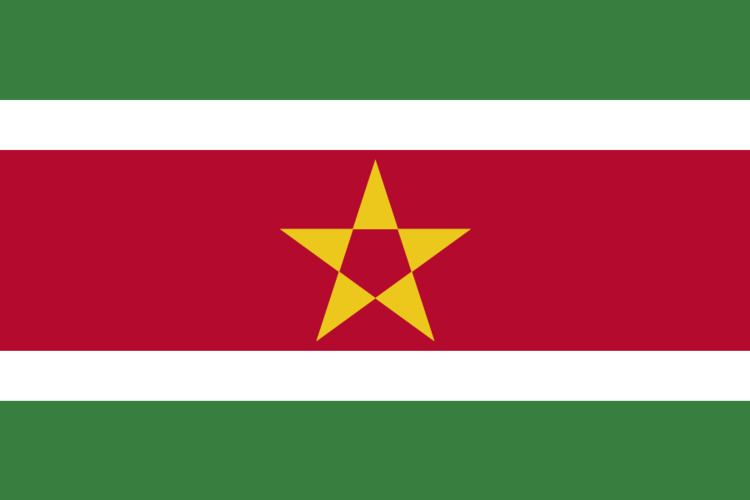Area 163,821 km² Largest city Paramaribo | ||
 | ||
Neighboring countries | ||
Suriname is located in northern South America and is part of Caribbean South America, bordering the North Atlantic Ocean, between French Guiana and Guyana. It is mostly covered by tropical rain forest, containing a great diversity of flora and fauna that, for the most part, are increasingly threatened by new development. There is a relatively small population, most of which live along the coast.
Contents
- Map of Suriname
- Location
- Area
- Land boundaries
- Maritime claims
- Terrain
- Natural resources
- Water
- Land use
- Irrigated land
- Natural hazards
- Current issues
- International agreements
- References
Map of Suriname
Location
Geographic coordinates: 4°00′N 56°00′W
Map references: South America. Surf
Area
Total: 163,820 square kilometers (63,250 sq mi)
Land: 156,000 square kilometers (60,000 sq mi)
Water: 7,820 square kilometers (3,020 sq mi)
Area - comparative: See order of magnitude 1 E+11 m². Slightly larger than the state of Georgia.
Land boundaries
Total: 1,703 kilometers (1,058 mi)
Border countries:
Coastline: 386 kilometers (240 mi)
Maritime claims
Exclusive economic zone: 200 nmi (370.4 km; 230.2 mi)
Territorial sea: 12 nmi (22.2 km; 13.8 mi)
Terrain
Most of the country is made up of rolling hills, but there is a narrow coastal plain that has swampy terrain.
Elevation extremes
Lowest point: Unnamed location in the coastal plain - 2 meters (6.6 ft) below Sea Level.
Highest point: Juliana Top - 1,230 meters (4,040 ft)
Natural resources
Timber, hydropower, fish, kaolin, shrimp, bauxite and gold. Small amounts of nickel, copper, platinum and iron ore.
Water
The country has one large reservoir, the Brokopondo Reservoir. Several rivers run through it, including the Suriname River, Nickerie River and Maroni or Marowijne River.
Land use
(Using 2005 Estimates)
Arable land: 0.36%
Permanent crops: 0.06%
Other: 99.58%
Irrigated land
510 square kilometers (200 sq mi) (2003)
Natural hazards
Tropical Showers, no hurricanes. no natural disasters.
Current issues
Deforestation is a real problem as timber is cut for export. There is also a lot of pollution of inland waterways by small-scale mining activities.
International agreements
Suriname has agreed to the following agreements: Biodiversity, Climate Change, Endangered Species, Law of the Sea, Marine Dumping, Ozone Layer Protection, Ship Pollution, Tropical Timber 94, Wetlands, Whaling
